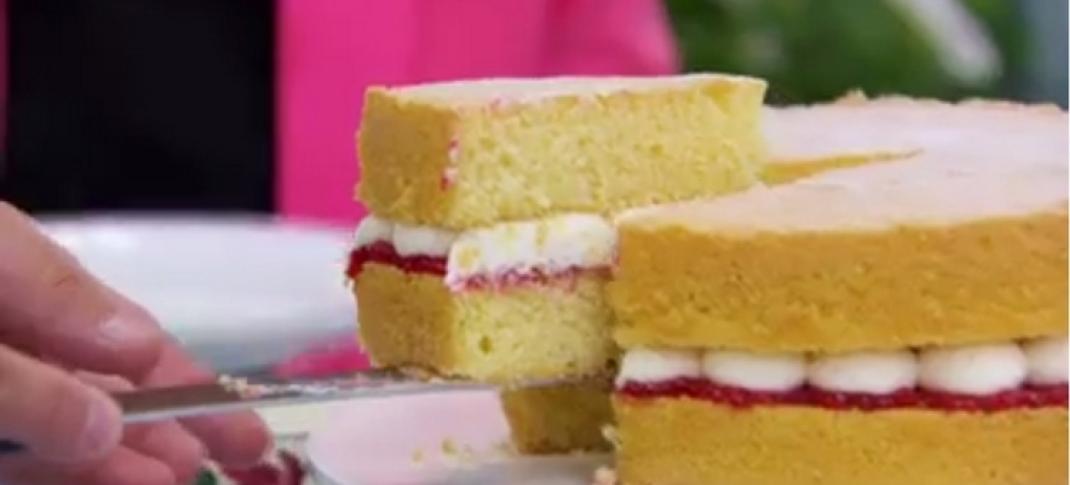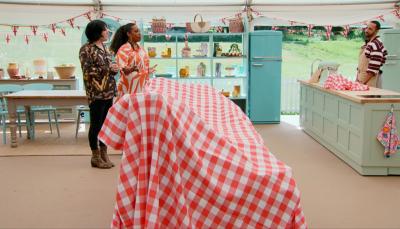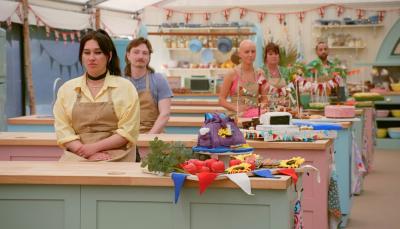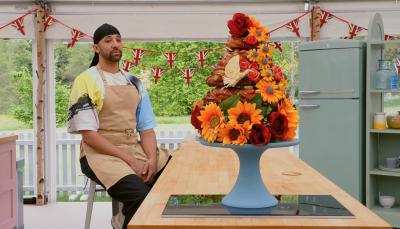Bake Like ‘The Great British Baking Show’: Victoria Sandwich

The competition was as stiff as Italian meringue last week when the three finalists in The Great British Baking Show were put through their paces one last time by judges Mary Berry and Paul Hollywood. The Season 4 finale brought together the top contestants in this reality competition: Jane, Candice, and Andrew, advancing from the original field of twelve. The last challenge really tested their baking mettle – requiring technique, timing, and tenacity. All three contestants proved that they had rightly earned their spot by continuing to bake their hearts out through the royally themed competition including a Filled Meringue Crown in the Signature Challenge; Victoria Sandwich in the Technical Challenge; and a picnic spread fit for a queen in the Showstopper Challenge. There was drama and tension swirling throughout the baking tent, but in the end, Candice Brown rose above the fray and was crowned Best Amateur Baker in the UK.
By the time the tenth episode arrived, the skill level required in the recipes chosen by the judges had reached its peak. At first, the Technical Challenge drummed up by Mary Berry, sounded straight forward. Bake a traditional Victoria Sandwich with raspberry jam and buttercream filling. The contests’ reaction to the announcement radiated confidence and sly smiles. Mary had chosen a staple in the British baking oeuvre. Victoria Sandwich, or Victoria Sponge Cake as it is also called, is a tea-time favorite of home bakers and restaurants alike. This sounded a bit too easy for the finale and I suspected a twist. When the recipe was revealed with only ingredients listed and two tins supplied, my heart sunk with the contestants. How could they create a cake without measurements (weights) and a method?

Anna Maria Russell, Duchess of Bedford (1783 – 1857), Lady in Waiting to Queen Victoria, is credited for creating afternoon tea: a light meal consisting of tea, sandwiches and cakes to alleviated her sinking feeling” that arrived around 4 o’clock. It is believed that the elegant Victoria Sandwich originates from Duchesses tea parties and was adapted into the royal household in the 1860’s, becoming the quintessential British tea-time favorite.
Named after the cake-obsessed Queen Victoria (1837-1911), a great Victoria Sandwich is a light, two-layer sponge cake that is golden brown with even, level layers. The filling, consisting of a layer of well-set raspberry jam and firm buttercream icing, should hold its shape when the weight of the second layer is added. The top is finished off with a light dusting of caster sugar (confectioners’ sugar). When sliced, the cake should be light, yet hold its shape. The texture should be velvety and buttery in the mouth, off-set by the tart jam and rich icing. A fabulous flavor combination that has been supplying smiles for 150 years.
The ability to make a proper Victoria Sandwich is the benchmark of every cook in Britain. First appearing in Mrs. Beeton’s Book of Household Management in 1861, it shortly became the most popular tea-time cake of the Victorian era. Making a great Victoria Sandwich is serious business. The Women’s Institute (W.I.) established after the Great War had strict guidelines for making the cake and baking competitions abound throughout the UK even today. When Mary Berry states at the top of the Technical Challenge that she has judged more Victoria Sandwiches at village shows, county fairs and schools than she can remember, she is not kidding. If you bake one item from Season 4 of The Great British Baking Show competition, let it be the Victoria Sandwich!

It was a relief to see that the contestants knew the secret to making a great sponge cake – measuring four equal weights of: butter, sugar, eggs and flour to make the batter. Modern bakers now add a leavening agent like baking powder to aid in rising, but early recipes like the one in Mrs. Beeton’s Book of Household Management relied on beating the butter and eggs to create volume (air) and then gently folding in the flour before baking. You will notice from watching the bakers on the show that Brits use metric measurement by weighing their ingredients vs. us Yanks who use the volume method with cups and measuring spoons. In this instance, by weighing the 4 eggs the bakers knew how much butter, sugar, and flour to use to complete the recipe. And, by using the all in one method preferred by judge Mary Berry, or by the creaming method of beating your eggs, butter and sugar and folding in the dry ingredients of flour, salt and baking powder, you have your method. The last step before baking is to equally split the batter in the cake pans so you have two cakes exactly the same size. This is where weighing your tins filled with batter before baking comes in handy. The choice of baking temperature and time used by the contestants was based purely on experience, resulting in various degrees of success. I suggest a moderate oven at 350˚ for 20 minutes.

By asking the contestants to bake a sponge cake without a full recipe, the judges tested them on their baking skills and instincts. Andrew won the Technical challenge by impressing the judges by meeting all the classic standards of a Victoria Sandwich. His cake was not only beautifully presented, the judges also thought the flavors were spot on. You too can impress your own judges – family and friends – by baking your own gloriously regal Victoria Sandwich for your next afternoon tea, dinner party or special celebration. Or, better yet, enter it in a local competition or county fair. It just might win you a blue ribbon!
Until next season bakers, check out more recipes from The Great British Baking Show at PBS Food, and indulge in purchasing Great British Bake Off - Perfect Cakes & Bakes To Make At Home. Ready, set, bake!




